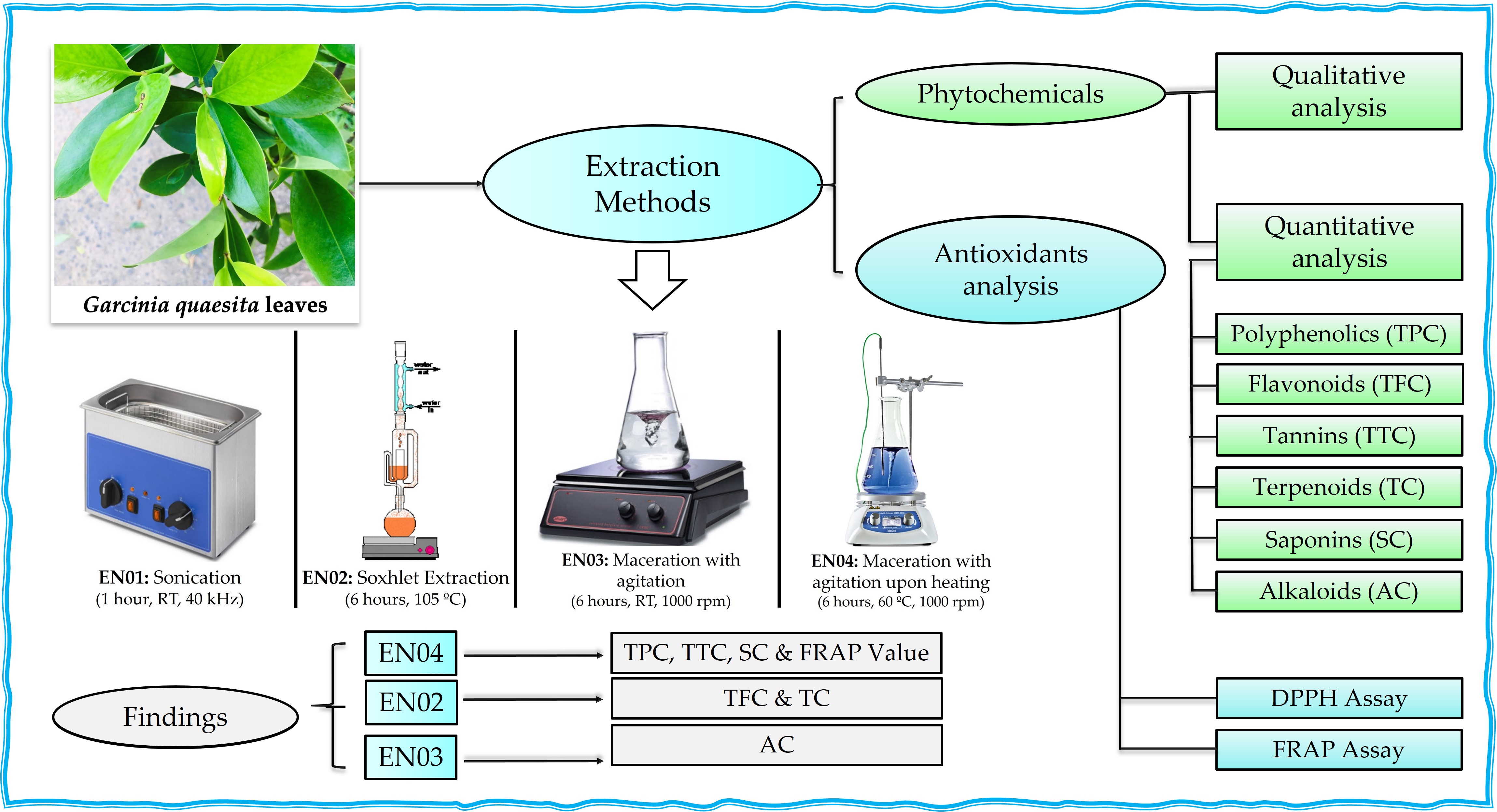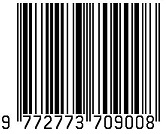Effect of Extraction Techniques on Phytochemicals and Antioxidants Activity of Garcinia quaesita Leaves
DOI:
https://doi.org/10.31357/ait.v2i1.5444Keywords:
Antioxidants, extraction methods, Garcinia quaesita, phytochemicals,Abstract
Garcinia quaesita is an endemic plant in Sri Lanka with a wide array of domestic and medicinal values, yet very limited studies have been reported. The goal of this study was to investigate the phytochemicals and antioxidants capacity of leaves of G. quaesita under different extraction techniques in order to monitor the effect of extraction techniques on the above parameters. Water was used as the solvent and four extraction methods, namely sonication (EN01, one-hour,
RT, 40 kHz), Soxhlet (EN02, six-hours, 105 ºC), maceration with agitation (EN03, six-hours, RT, 1000 rpm), and maceration with agitation upon heating (EN04, six-hours, 60 ºC, 1000 rpm), were applied. Phytochemical screenings and quantification of polyphenolics (TPC), flavonoids (TFC), tannins (TTC), terpenoids (TC), saponins (SC), and alkaloids (AC) were performed using standard methods, whereas antioxidants capacity was assessed using FRAP and DPPH assays. The results revealed that G. quaesita contains a wide range of phytochemicals and the TPC, TTC and SC profiles appeared to be higher in the extraction process of EN04 (60.73 ± 0.06 mg GAE/g, 60.12 ± 0.06 mg TAE/g, and 257.64 ± 0.72 mg SE/g, respectively) whereas those were lower in the technique EN01. In addition, TFC and TC levels were high in EN02 (3.02 ± 0.00 mg QE/g and 17.75 ± 0.04 mM LE/g respectively) and besides, TFC was low in method EN03, whereas TC was low in EN01. Interestingly, AC was found to be higher in EN03 (1.16 ± 0.03 mg AE/g) and lesser in EN02. Total antioxidant capacity ( FRAP value) was calculated to be higher in extraction method EN04 (72.08 ± 0.00 mg Trolox Eq/g) whereas it was lower in extraction method EN01. The method, EN03 gave the lower IC50 value in DPPH radical scavenging assay (10.49 ± 0.12 mg/ml), indicating high scavenging activity. In conclusion, the extraction technique EN04 is well suitable to extract polyphenolics and antioxidants from G. quaesita leaves. Though G. quaesita leaves contain a diverse range of bioactive compounds and antioxidants properties, it is important to choose the correct extraction technique based on the objectives of the desired research work, as the number of phytochemicals extracted, and antioxidant capacity varies depending on the extraction technique used.
Full paper submission of ICIET 2021

Downloads
Published
How to Cite
License
Copyright (c) 2022 Shanthirasekaram Kokilananthan, Vajira Bulugahapitiya, Harshi Manawadu, Chinthaka S. Gangabadage

This work is licensed under a Creative Commons Attribution-NonCommercial-NoDerivatives 4.0 International License.
The Authors hold the copyright of their manuscripts, and all articles are circulated under the terms of the Creative Commons Attribution License, which permits unrestricted use, distribution, and reproduction in any medium, as long as that the original work is properly cited.
The use of general descriptive names, trade names, trademarks, and so forth in this publication, even if not specifically identified, does not imply that these names are not protected by the relevant laws and regulations. The authors are responsible for securing any permissions needed for the reuse of copyrighted materials included in the manuscript.




